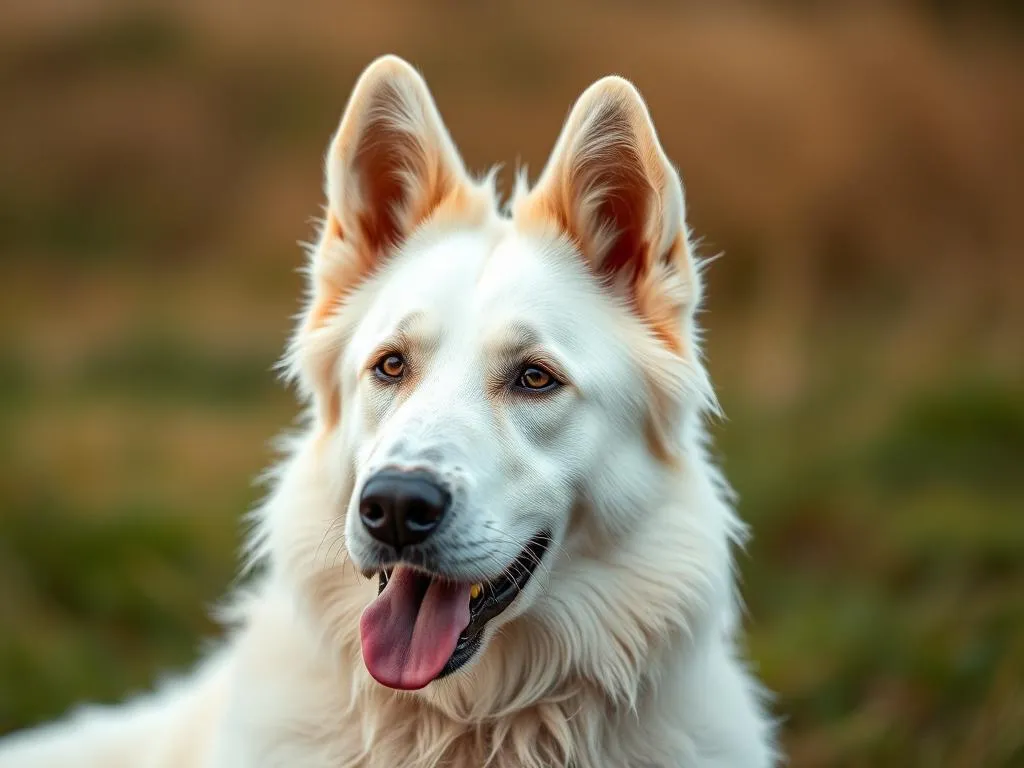
Introduction
Dog breeds play a crucial role in understanding the various types of dogs available to potential owners. Each breed comes with its own unique set of characteristics, behaviors, and care requirements, making it essential for anyone looking to adopt a dog to understand these traits. One breed that has garnered particular attention for its striking appearance and loyal nature is the white shepherd dog. This article aims to explore the characteristics, history, care, and living conditions suitable for this beautiful breed.
Understanding Dog Breeds
Definition of Dog Breeds
A dog breed is a specific group of domestic dogs with distinct characteristics that differentiate them from other breeds. These characteristics can include physical traits, temperament, and behavioral tendencies. Understanding these traits is vital when choosing a dog, as it helps potential owners select a breed that aligns with their lifestyle and preferences.
Classification of Dog Breeds
Dog breeds are often classified into various categories, such as working, herding, toy, and sporting breeds. Each classification serves a purpose, reflecting the original roles these dogs played in human society. Additionally, mixed breeds and designer dogs have gained popularity, resulting from the intentional breeding of two different purebred dogs to combine desirable traits.
The White Shepherd Dog
History and Origin
The white shepherd dog is a stunning breed that traces its origins back to the German Shepherd. The breed began to emerge in the 1960s when breeders in the United States and Canada focused on producing a dog with a predominantly white coat. Originally, these dogs were often considered undesirable due to their color, but over time, the white shepherd dog gained recognition and appreciation for its beauty and temperament. The breed was eventually recognized as distinct, with breed clubs forming to promote its qualities.
Physical Characteristics
White shepherd dogs are medium to large-sized dogs. They typically weigh between 50 to 90 pounds and stand about 22 to 26 inches tall at the shoulder. Their striking white coat is one of their most distinguishing features, which can be either long or short. The coat is dense, requiring regular grooming to keep it healthy and free of mats.
These dogs have a well-proportioned body, erect ears, and expressive eyes that can range from dark brown to amber. Their physical appearance is both elegant and athletic, making them suitable for various activities.
Temperament and Behavior
The white shepherd dog is known for its intelligence, loyalty, and protective nature. They are highly trainable and often excel in obedience training, making them ideal companions for families and individuals alike. These dogs tend to be social, enjoying the company of people and other pets, provided they are properly socialized from a young age.
Common behavioral tendencies include a strong herding instinct and a desire to protect their family. Early socialization and training are essential to ensure that they grow up to be well-adjusted dogs. Without proper guidance, their protective instincts may lead them to be overly cautious or even aggressive toward strangers.
Health Considerations
Like all breeds, white shepherd dogs are prone to certain health issues. Some common health concerns include hip and elbow dysplasia, which can lead to arthritis and mobility issues. Other potential health problems include skin allergies and certain types of cancer. The lifespan of a white shepherd dog typically ranges from 12 to 14 years.
Preventive healthcare is vital for maintaining the well-being of these dogs. Regular veterinary check-ups, a balanced diet, and proper exercise can help mitigate some health risks associated with the breed.
Caring for a White Shepherd Dog
Basic Needs
Caring for a white shepherd dog involves meeting their basic needs, which include proper nutrition and grooming. A high-quality diet that meets their energy requirements is crucial. Owners should choose dog food that is appropriate for their age, size, and activity level.
Grooming is also essential, especially for those with longer coats. Regular brushing helps reduce shedding and keeps their coat healthy. Bathing should be done as necessary, usually every few months or when the dog becomes particularly dirty.
Training and Socialization
Training and socialization are critical components of raising a white shepherd dog. Early exposure to different environments, people, and other animals will help them develop into well-rounded adults. Positive reinforcement training methods work best for this intelligent breed. Consistency is key; establishing clear rules and boundaries will help your dog understand what is expected of them.
Group classes or training sessions can also be beneficial, as they provide additional socialization opportunities while reinforcing training skills.
Exercise and Activity Levels
White shepherd dogs are active and energetic. They require daily exercise to keep them physically and mentally stimulated. A minimum of 60 to 90 minutes of exercise each day is recommended. Activities such as long walks, runs, and play sessions in the yard or at the park will help meet their exercise needs.
Interactive games, such as fetch or agility training, can also keep white shepherd dogs engaged and happy. They thrive on mental challenges, so puzzle toys or obedience training can be excellent ways to stimulate their minds.
Living with a White Shepherd Dog
Ideal Living Conditions
While white shepherd dogs can adapt to various living environments, they thrive best in homes where they have space to roam and play. Urban settings can work, provided they receive enough exercise and mental stimulation. However, a rural or suburban environment with a secure yard is ideal, as it allows them to explore and enjoy the outdoors safely.
Family dynamics should also be considered. White shepherd dogs are known for their loyalty and protective instincts, making them excellent family pets, especially for active households. However, they require socialization with children to ensure gentle interactions.
Interaction with Children and Other Pets
White shepherd dogs generally have a friendly disposition towards children, making them good family companions. They tend to be patient and protective, often forming strong bonds with the kids in their family. However, supervision is crucial during playtime, especially with younger children, to prevent any accidental roughhousing.
When introducing a white shepherd dog to other pets, gradual introductions are recommended. Proper socialization will allow these dogs to coexist peacefully with other animals. Early experiences will help them learn how to behave around different species, reducing the likelihood of aggressive behavior.
Adoption and Rescue
For those considering a white shepherd dog, adoption is a great option. Many breed-specific rescues and shelters have dogs in need of loving homes. The adoption process typically involves filling out an application, meeting the dog, and possibly undergoing a home check.
For those looking for a puppy, it’s essential to find reputable breeders who prioritize health and temperament. Researching and visiting breeders will help ensure you’re making a responsible choice.
Conclusion
The white shepherd dog is a remarkable breed that offers companionship, loyalty, and protection. Understanding their history, characteristics, and care needs is essential for anyone thinking about welcoming one into their home. With proper training, socialization, and exercise, these dogs can be a delightful addition to any family.
Owning a white shepherd dog comes with responsibilities, but the joys of having such a devoted companion make it all worthwhile. If you’re considering adding a dog to your family, this breed is certainly worth exploring.
FAQs
Frequently Asked Questions about White Shepherd Dogs
Are white shepherds good family dogs?
Yes, white shepherd dogs are known for their loyalty and protective nature, making them excellent family pets, especially with proper training and socialization.
How much exercise do they need?
White shepherd dogs require a minimum of 60 to 90 minutes of exercise daily to keep them healthy and happy.
Do they shed a lot?
Yes, white shepherd dogs do shed, especially during seasonal changes. Regular grooming will help manage shedding.
Are they good with other pets?
With proper socialization, white shepherd dogs can coexist peacefully with other pets, including cats and smaller animals.
What health issues should I be aware of?
Common health issues in white shepherd dogs include hip and elbow dysplasia, skin allergies, and some types of cancer. Regular vet check-ups are essential.








